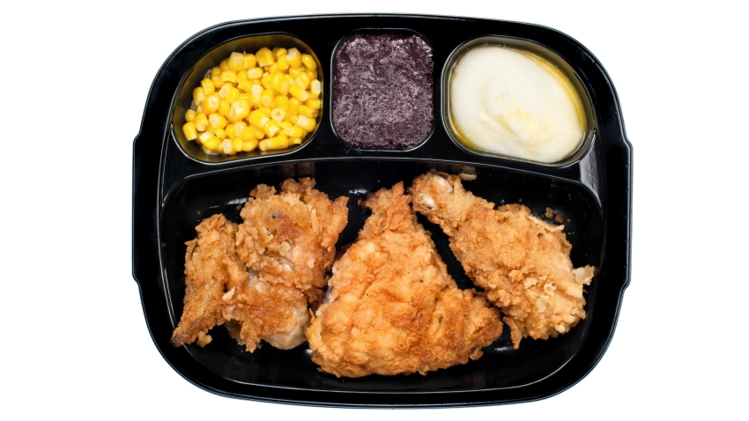The convergence of shifting consumer behavior, technological innovation, and global urbanization is redefining the food packaging landscape—none more so than in the ready-to-eat (RTE) segment. Once considered a niche category catering to convenience-seeking consumers, RTE food has matured into a mainstream market force. In 2024, the global RTE food packaging market reached USD 120 billion and is projected to scale up to USD 190 billion by 2030, growing at a robust CAGR of 7.8% .
This rapid expansion reflects broader socio-economic patterns: the erosion of traditional meal preparation time, increasing reliance on convenience food across all income segments, and elevated expectations around food quality and safety. In this context, packaging is no longer peripheral—it is a central pillar of product value.
Structural Growth Drivers
1. The Acceleration of Urban Living
With over 55% of the global population now living in urban areas—and that figure expected to rise to 68% by 2050—traditional cooking is losing ground to ready-made meals. Urban professionals and younger demographics, in particular, are fueling demand for packaged food that is safe, hygienic, and instantly consumable.
RTE food packaging is being optimized for this urban consumption dynamic, focusing on compactness, resealability, and ease of disposal. Microwaveable trays, tear-open sachets, and grab-and-go formats are proliferating, particularly in convenience stores and vending channels.
2. Technological Integration and Performance Enhancement
Advanced packaging technologies are enabling RTE manufacturers to achieve longer shelf lives without compromising food integrity. Modified Atmosphere Packaging (MAP), vacuum sealing, and intelligent barrier films are helping reduce food spoilage and waste—critical priorities in both developed and emerging economies.
Smart packaging innovations are also gaining traction. From time-temperature indicators to QR codes offering traceability, these additions enhance both supply chain transparency and consumer engagement—serving brand loyalty and regulatory compliance simultaneously.
3. Heightened Focus on Hygiene and Food Safety
Post-pandemic behavior has cemented food safety as a core purchasing criterion. Consumers are more attuned than ever to packaging that guarantees tamper-resistance, aseptic processing, and minimal human contact. This has compelled manufacturers to adopt rigorous packaging protocols, often integrating touchless sealing and sterilization mechanisms.
Regulators, too, are raising the bar. The alignment of consumer sentiment and policy enforcement is pushing packaging providers to standardize high-grade solutions across all price points.
Market Composition and Segmentation Trends
By Material Type
- Plastic: Continues to dominate due to its versatility, cost-efficiency, and strong barrier attributes. However, regulatory and environmental pressures are mounting.
- Paperboard and Bio-based Alternatives: Rapidly gaining traction, especially in Europe and North America, where consumers increasingly associate eco-packaging with brand integrity.
By Packaging Type
- Rigid: Preferred for high-value or fragile RTE items such as gourmet meals, seafood, and desserts.
- Flexible: Dominant in snack categories and lightweight meals, favored for its transport efficiency and lower carbon footprint.
- Semi-Rigid: Emerging as a viable hybrid, balancing protection and adaptability for mid-tier applications like heat-and-serve entrees.
By Application
- Prepared Meals: Leading demand center, underpinned by lifestyle shifts and high-frequency purchases.
- Snacks and Confectionery: Driven by impulse consumption and increasing health-oriented snack formats.
- Meat and Seafood: Require high-performance packaging that ensures freshness and leak-proof logistics.
- Instant Foods (Noodles, Pasta): A growth frontier, particularly in Asia-Pacific and Sub-Saharan Africa, where affordability and volume drive innovation.
Regional Landscape: Uneven Maturity, Universal Opportunity
North America
This region maintains its lead with over 35% of market share in 2024. The U.S. and Canada benefit from a mature retail ecosystem, strong cold chain infrastructure, and high consumer spend on premium food products.
Asia-Pacific
Poised for the fastest growth, this region’s momentum is driven by rapid urbanization, changing dietary patterns, and growing acceptance of Western meal formats. Local production hubs, government support for food processing, and mobile-first food delivery ecosystems are reinforcing packaging demand across India, China, Indonesia, and Vietnam.
Europe
The European Union’s stringent sustainability mandates are catalyzing the shift to recyclable and compostable packaging formats. This region is also witnessing heightened innovation in biodegradable films, particularly in countries like Germany and the Netherlands, where consumer eco-consciousness is particularly strong.
Industry Headwinds: Risks and Challenges
Cost-to-Serve Complexity
Advanced packaging solutions often require specialized machinery, higher-grade inputs, and ongoing regulatory validation. These costs pose a barrier to entry for small and medium-sized enterprises, potentially leading to market consolidation and reduced supplier diversity.
Sustainability Paradox
While consumer demand for sustainable packaging is at an all-time high, current recycling infrastructure in many regions remains inadequate. This disconnect between packaging innovation and end-of-life processing creates reputational and operational risks for brands unable to close the sustainability loop.
Strategic Levers and Growth Opportunities
1. ESG-Centric Packaging Innovation
RTE packaging providers that embed circularity principles—through compostable materials, mono-material structures, or reusable designs—are not only addressing regulatory mandates but also differentiating themselves in crowded marketplaces.
2. Localization in Emerging Markets
Tailoring packaging designs to local culinary habits, storage realities, and income profiles will be essential in unlocking emerging market potential. For example, humidity-resistant sachets in tropical climates or solar-compatible sterilized packaging in regions with weak grid access.
3. Omni-Channel Readiness
As grocery and meal kit services shift further online, packaging must be engineered for last-mile durability, shelf display, and thermal control. RTE products that perform across both physical retail and e-commerce environments will hold a strategic advantage.
Packaging as a Strategic Growth Enabler
The global RTE food packaging market is more than a facilitator of convenience—it is a dynamic frontier for innovation, resilience, and brand transformation. Companies that view packaging not merely as a cost center, but as a strategic asset embedded in their growth model, will outperform in an increasingly competitive landscape.
As macrotrends such as urbanization, digitalization, and sustainability reshape the consumer packaged goods sector, ready-to-eat packaging will continue to sit at the intersection of consumer expectations, regulatory evolution, and technological progress.

